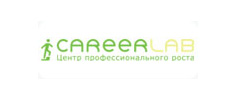List articles
|
№ 1(91)
28 february 2023 year
Rubric: Competition in industry markets Authors: Yakimova E., Zabegaeva V. |
The growing interest in a healthy lifestyle among Russian consumers leads to an increase in demand for healthy food products and beverages, which is reflected in the rather high growth rates of this market and its increased attractiveness for manufacturing companies. In this article, the purpose of the study is to assess the dynamics of the level of competition in the segments of the Russian market of healthy drinks (“Better for You”, “Fortified/Functional”, “Naturally healthy” and “Organic”) and throughout the market as a whole from 2012 to 2021. To achieve the goal, the following tasks are set: 1) to identify the dominant group of players, the degree of differentiation within the group itself; 2) to determine the level of market concentration; 3) to analyze the dynamics of the level of competition from 2012 to 2021. To determine the degree of concentration of market segments, the Herfindahl – Hirschman index (HHI) is used, to identify a group of dominant players and its size – the Lind index (IL) and the concentration coefficient (CRSV), to determine the degree of differentiation between the leading players – a modified version of the Hall – Tideman index (HTSV), to analyze the dynamics of the level of competition, – matrix SV (Strength/Variety). The conducted research shows that for 2012–2021 in all segments of the healthy drinks market, one or another trend of leaving the RO quadrant occurs either by increasing the total market share of leaders, or by increasing the level of differentiation between players. In each of the market segments, there is a tightening of monopolization, in the market as a whole – a complete departure from free competition to natural oligopolization. The composition of the dominant groups in large market segments strongly intersects and includes major international players, although there is a noticeable decrease in their share in the market under consideration. Continue... |
|---|---|
| The article is devoted to the efficiency estimation of the deployment of RES auctions in the EU to reduce the RES generation cost and consequently the cost of its state support. The relevance of the study is due to the fact that to improve the efficiency of state support for RES generation in the EU, as the main driver of its development, since 2017 EU member states have been required to set its level at auctions. To achieve this goal, we analyzed the dependence of RES electricity prices at auctions in 14 EU member states (and separately in Germany and France) on the ratio of volume participating with volume requested and volume awarded as well as technology neutrality/specificity of auctions (number of competing technologies). The following results were obtained in the study. Firstly, both in the EU, as well as in Germany and France RES electricity prices were lower at auctions where volume participating exceed volume requested rather than volume awarded. The following conclusions were drawn. Competition at the auction arises when not all announced projects will receive support within the allocated amount of funding. Thus, more correct indicator of competition level at the auction is oversubscription of the auction. Secondly, in comparison to the EU, in Germany and France lower RES electricity prices were set at technology neutral auctions. Competition of technologies should lead to deployment of the most cost-efficient RES generating plants; therefore, the conclusion is drawn that in the absence of risks of suboptimal results priority should be given to technology neutral auctions. Continue... | |
| Cooperation agreements between competitors can be an important tool for markets to adapt to external shocks, whether those are the consequences of a pandemic or economic sanctions. In this regard, the discussion of approaches to evaluating such agreements for admissibility from the point of view of antimonopoly legislation under current conditions is relevant. The purpose of the article is to assess the current state of antimonopoly control of cooperation agreements in Russia. To do this, we use the tools of the new institutional economic theory to analyze the history of the development of the regulation of such agreements. We reveal how modern sources of possible type I enforcement errors (the erroneous prohibition of agreements that actually contribute to the growth of public welfare) are connected with the history of institutional changes in the rules governing the analysis of cooperation agreements from the point of view of antimonopoly legislation. In particular, we show that the approaches to the analysis of cooperation agreements developed during the period of validity of a specific set of rules in 2011–2015 and summarized in the Clarifications of the Presidium of the FAS Russia on the procedure and methodology for analyzing cooperation agreements (2013) currently create an overly strict control regime for such agreements after the changes in the antimonopoly law that took place in 2015. The importance of solving this problem is demonstrated in light of the ability of companies to use cooperation to mitigate the consequences of external shocks, including economic sanctions. Structural alternatives to the control of such agreements are formulated that are applicable to various actual forms of agreements between competitors, which could contribute to a better adaptation of market participants to changing conditions. Continue... | |
| The article is devoted to the study of the benefits for small and medium-sized businesses from the introduction of a social responsibility system. Currently, an increasing number of companies are striving to be socially responsible, responding to the challenges of our time, as society expects help in solving social problems, protection and support of citizens not only from the state, but also from business. A good example was the activity of companies within the framework of the SR during the COVID-19 pandemic, when businesses had to adapt to the situation, take responsibility not only for themselves, but also to support their stakeholders. At the same time, the question of why it is useful for small businesses to apply the concept of SR in their activities becomes important. This determines the relevance of this study. The purpose of the study is to reveal the advantages of implementing a social responsibility system for the development of small and medium-sized businesses. To achieve this goal, it is necessary to solve several tasks: to clarify the concept of “social responsibility” in relation to the activities of small and medium-sized businesses; to conduct a SWOT analysis with SMEs as opposed to CSR; to identify possible benefits from the implementation of the concept. The methodology of this study were a comparative analysis; a method for analysing and synthesizing information about the social responsibility system; a survey among representatives of SMEs. As a result of the study, the features of the implementation of social responsibility by small and medium-sized businesses were identified. In the article, the author reveals the advantages of entrepreneurs from the introduction of social responsibility, designates the rating of their importance for business based on the survey. Special attention is paid to successful cases among SMEs in the implementation of SR. The author demonstrates that the application of social responsibility is a win-win strategy, both for the company and for society. Continue... | |
|
№ 1(91)
28 february 2023 year
Rubric: Entrepreneurship practice Authors: Lukashenko M., Dobrovolskaya T. Y. |
The article is devoted to the consideration of the factors, taking into account which an entrepreneur should prepare an idea pitch to ensure the most effective perception by the investor. Since the main task of pitching is to arouse the steady interest of the investor, which must be transformed into a decision to invest, the study of what the investor will evaluate and how it should be taken into account by the entrepreneur when preparing the pitching becomes an urgent scientific task. The article substantiates that in addition to the business factors assessed by the investor during the pitching, the so-called contextual factors play a significant role in making a decision to invest in a project. The authors point out that they should include very diverse factors – from the persuasiveness of verbal and non-verbal communication to the expertise of the team representing the project and the number of cases it has implemented. The article analyzes the pitches of entrepreneurs and feedback from investors in the Sberbank start-up community “Sberstartup-roasting 2022” and feedback on investment pitches from private investors, identifies the factors of pitching that are evaluated by investors, and makes judgments about which of them are insufficiently taken into account by entrepreneurs when preparing a pitch. The concept of contextual factors of pitching has been introduced into scientific circulation, it has been revealed which factors should be referred to as contextual factors, and an indicator of contextual factors has been developed, which can be used to track weaknesses in the preparation of an entrepreneur for pitching. It is noted that important context factors, among others, are the presentation of the “value of the product” and the presentation of the essence of the project from the point of view of the “pain” of the consumer. The content of training programs for entrepreneurs in pitching was analyzed and programs were identified that contain the most comprehensive consideration of the factors that investors are guided by when evaluating pitching. Continue... |
| The article is devoted to the consideration of modern, innovative methods of promoting a new product on the market, which is a tool for strengthening the competitiveness of an enterprise, its efficiency in a dynamic economy. At the first step of the work, the authors consider and analyze practical methods and tools for creating and promoting new goods and services on the markets that meet modern consumer needs. The considered tools are aimed at expanding existing and developing new market niches. The article substantiates their ability to increase brand loyalty, while reducing possible risks. The next step of the work was the development of a model for promoting a new product in the company’s marketing system using the example of a specific enterprise, namely JSC NPP Almaz, the first stage of which was an analysis of the financial and economic activities of the enterprise in order to determine the possible costs of creating and promoting a new product. The authors draw attention to the possible risks when creating a new product and give recommendations on how to reduce them. Based on the analysis, the last stage of the work was the development of specific recommendations for modifying the tools for promoting a new product in the enterprise marketing system. The main base of the modification is the synthesis of traditional channels of product promotion, such as personal sales, participation in exhibitions, radio advertising with innovative Internet tools, among which are SEO optimization, SMM management, contextual advertising. The authors give arguments justifying the use of community marketing functionality in order to improve the quality of promotion of new products through social networking channels. As a result, an assessment is made of the possible economic effect of the proposed scheme for promoting a new product on the market and occupying new product niches. Continue... |



